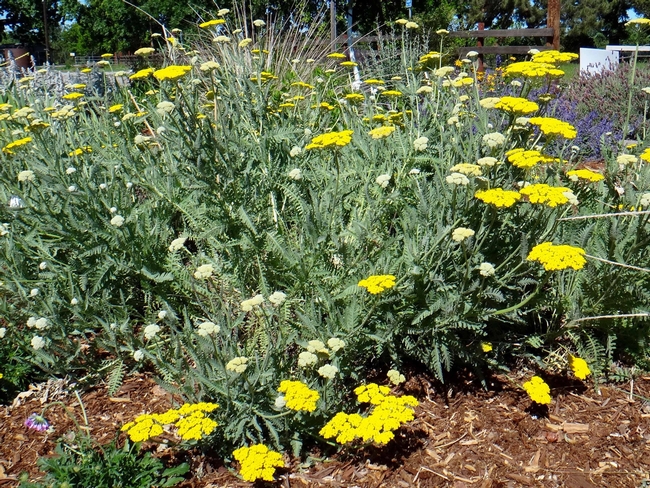By Alicia Springer, Butte County Master Gardener, October 21, 2016.

Let's not oversell that last point.
Low maintenance does not mean no maintenance. A drought-tolerant garden renewal will require some watering, weeding, deadheading, and pruning—especially in the first year, as perennial beds, groundcovers, shrubs, and trees establish root systems, growth habits, and branch structures. If your garden maintenance routine has primarily involved writing checks to a lawn-care service, this may seem like more maintenance, not less. But an established, diversified water-wise planting can thrive without fertilizers, pesticides, herbicides, manicures, or the roar of weekly mowing and blowing. “Low-ish” maintenance means paying attention and responding—with clippers, pruners, weeders, and rake—to seasonal cycles of growth, flowering, and dormancy. It can require a modest investment in time and effort, but you will be rewarded with a sense of satisfaction that goes beyond simply cutting the water bill.

Plan before you plant. Decide on a manageable project area—start small. Determine preparation needs such as turf removal and weed control, and research low-maintenance plant selections that fit your space and vision. Be aware that some California natives go dormant and look pretty haggard by the end of summer, so you may want to mix them with in with species that bloom in the fall. A great place to start your research is the Butte County Master Gardeners website, with a detailed regional plant list and links to a wealth of online info: http://ucanr.edu/sites/bcmg/resources/garden/
Choose plants that support wildlife. If one of your goals is to provide habitat for pollinators, birds, and other fauna, research the best selections and how to care for them. Start at the National Wildlife Federation's Garden for Wildlife website: http://www.nwf.org/Home/Garden-For-Wildlife.aspx
Group plants with similar needs together. Don't create extra maintenance work for yourself by sticking an odd-plant-out amidst others that thrive together.
Set up drip irrigation. Moving a dripping hose around the landscape gets old, fast. To get new plantings with similar low-water needs established in the first summer, and then maintain them once established, automate watering with a zoned drip watering system on a timer, and plan the zones so they cover plantings that require the same frequency, amount, and type of irrigation.
Don't be a greedy gardener. Start small and keep it manageable.
Enjoy. Invest some time in “low-ish” maintenance, and reap the rewards of getting a little dirt under your fingernails—not only water conservation and wildlife habitat, but a hands-on relationship with your own garden environment.